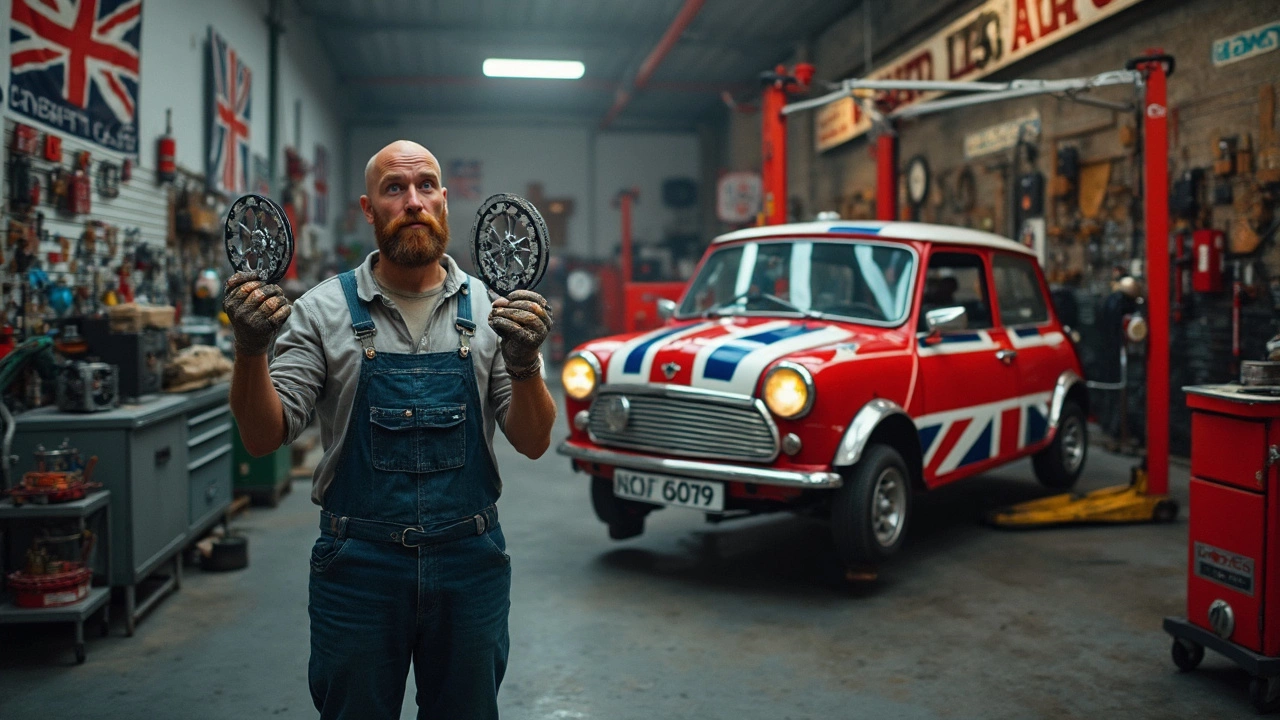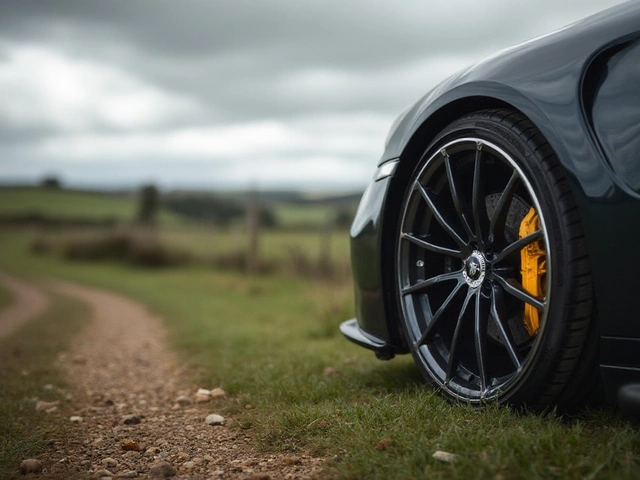If you've ever thought about giving your car that extra flare or improving its driving performance, you might've heard about wheel spacers and adapters. At first glance, they may seem like the same thing, but that's far from the truth. So, what's the lowdown?
Wheel spacers are all about pushing out your wheels. Want a wider stance for better handling? Spacers can do the trick. They are essentially just discs that fit between the wheel and the hub, giving your ride that beefier look and more road grip.
On the flip side, wheel adapters are a game changer when trying to fit wheels that aren't designed for your specific car model. These are essential if you're eyeing a set of rims made for a different bolt pattern than your own. Adapters change that pattern, opening up a whole new world of wheel options.
Understanding the distinction between these two can save you time, money, and potential headaches. Stay tuned as we break down when and why you'd want to use each one. Plus, we've got some handy tips for making your choice count.
- Basics of Wheel Spacers
- Understanding Wheel Adapters
- Key Differences Between Spacers and Adapters
- Practical Tips for Use
Basics of Wheel Spacers
Alright, let's break down what wheel spacers are all about. Think of spacers as the unsung heroes for your car's stance and stability. They’re thin metal discs that you install between the hub, where your wheel mounts, and the wheel itself. Spacers push the wheels outward, creating more space between the wheel and the car body. Sounds simple, right?
The real magic of wheel spacers is in the difference they can make not just in looks but also in handling. A wider track means better stability when cornering since it reduces the car's natural tendency to roll.
Advantages of Using Wheel Spacers
So, what are the perks? First off, the aesthetics. A wider stance often gives your car a more aggressive appearance — and who doesn’t want that? Besides looks, wheel spacers are praised for enhancing driving performance.
- Improved Grip: With the wheels pushed outward, you often get a tighter grip on the road, leading to better handling during turns.
- Enhanced Brake Clearance: Ever thought of getting those cool big brakes? Spacers can make sure they fit without rubbing the rims.
- Versatility: Sometimes, you just love a specific set of wheels that don’t quite fit your car’s offset needs. Spacers can bridge that gap.
Things to Keep in Mind
Before rushing into it, there are some considerations. First, make sure you're choosing the right wheel spacers size. Too thick, and you run the risk of your tires poking out beyond the fender. Also, remember to check your local laws, as some places have regulations against that aggressive wheel poke.
Installing wheel spacers might seem like a piece of cake, but it's essential to tighten everything to the correct specifications. Missteps can lead to wobbles or, worse, safety issues.
Thinking about quality? Materials matter! Often, spacers are made from aluminum alloys. It's strong, lightweight, and resistant to rust. But always double-check that they're compatible with your specific vehicle model to avoid any potential pitfalls.
Understanding Wheel Adapters
Let's dive into what wheel adapters really are. These devices are pretty nifty for anyone looking to fit a set of wheels with a different bolt pattern onto their car. Unlike wheel spacers, which merely push the wheels outward, adapters serve a more specific function.
Think of wheel adapters as the bridge between misfit rims and your car's hub. They convert the bolt pattern of your vehicle to match that of a different set of wheels. For example, if your car has a 5x114.3 pattern but you've found the perfect wheels in a 5x120 size, adapters are your way to make them compatible. So, if customizing your ride with exotic wheels is on your mind, adapters might be the way to go.
How Do They Work?
The process is pretty straightforward. Each adapter fits securely onto your existing hub, creating a new surface for the wheel to attach. This not only ensures a snug fit but also maintains the necessary balance and alignment. A well-installed adapter won't just sit there loosely; it becomes a part of the vehicle's wheel assembly.
Considerations When Choosing Adapters
- Material: Most adapters are made from high-strength aluminum. It's lightweight yet durable, reducing strain on your vehicle's suspension.
- Thickness: Adapters typically add some width, similar to spacers, which can impact your vehicle's handling. Make sure this width works with your setup.
- Quality: Not all adapters are created equal. Look for reputable brands to ensure safety and performance.
Adapters can open up a world of possibilities, but they must be used correctly. When you fit new wheels, ensure they're balanced and aligned to prevent any issues on the road. Done right, adapting wheels can turn your car into a showstopper without compromising performance.

Key Differences Between Spacers and Adapters
When it comes to wheel spacers and wheel adapters, the differences aren't just in the names. Let's break down what sets these automotive parts apart.
Functionality
The main thing to know is what these gadgets actually do. Wheel spacers are straightforward: they simply widen the gap between the wheel and hub. This gives your car a more aggressive stance and can improve cornering stability by slightly lowering the center of gravity.
On the other hand, wheel adapters have a dual purpose. Not only do they give a spacing effect, but they also change the bolt pattern. This means you can fit wheels that weren't originally made for your vehicle's model or type, opening the door to different styles and designs.
Installation Complexity
Both parts might sound like an easy install, but there are differences. Spacers generally come with a straightforward bolt-on method. You sandwich them between the hub and wheel, and you're good to go.
Adapters, however, require a bit more attention. Because they modify the bolt pattern, aligning everything correctly is crucial to avoid any wonky fits or vibrations. It's always best to check compatibility thoroughly before proceeding.
Compatibility and Versatility
- Wheel spacers are a universal fit, meaning they'll work on most vehicles as long as you choose the right size.
- Wheel adapters demand more precision. You must make sure the adapter matches both the hub and the wheel bolt patterns you have and want to use.
Cost Implications
Last but not least, let's talk money. Wheel spacers tend to be cheaper, primarily because they're simpler devices. You're essentially paying for the metal disc and the labor to install it if you don't DIY.
Adapters usually cost a bit more. There's more engineering involved due to the bolt pattern conversion aspect. And if you're not confident in your skills, you'll also need to factor in professional installation costs.
In summary, while both spacers and adapters can help you mod your car, they each shine in different areas. Knowing their distinct characteristics will help you make the right choice for your car's set-up and style goals.
Practical Tips for Use
So, you've decided to dip your toes into the world of wheel spacers or wheel adapters. Here are some practical tips to make sure you get the most out of them without running into trouble down the line.
Choosing the Right Size
It's crucial to pick the right size for both spacers and adapters. You can't just eyeball it! Check the measurement of your vehicle's current wheel offset and bolt pattern before making a purchase. Getting the wrong size can be a hassle and might even damage your wheel bearings over time.
Quality Matters
Not all wheel spacers and adapters are created equal. Investing in high-quality, reputable brands can save you a heap of trouble. Cheaper, low-quality options may lack the durability and precision needed for safe driving.
Installation Insight
While installing these bad boys isn't rocket science, there's a bit of finesse involved. Here are some steps to get you started:
- Safety First: Ensure that your car is securely jacked up before starting the installation. Safety can't be stressed enough.
- Clean the Hub: Dirt and debris can affect the fit. Clean the hub surface before installing wheel spacers or adapters.
- Proper Torque: Make sure the lug nuts are tightened to the manufacturer's specifications. Over- or under-tightening can lead to serious issues.
Periodic Check-Ups
Once they're on, it's a good idea to keep an eye on them. After about 100 miles, recheck the tightness of the lug nuts. It's a simple task that can keep you rolling safely.
If you follow these tips, your car modifications should be smooth sailing. Remember, whether you're after enhancing your car's performance or just aiming for an aesthetic upgrade, using wheel spacers and adapters correctly is key.




